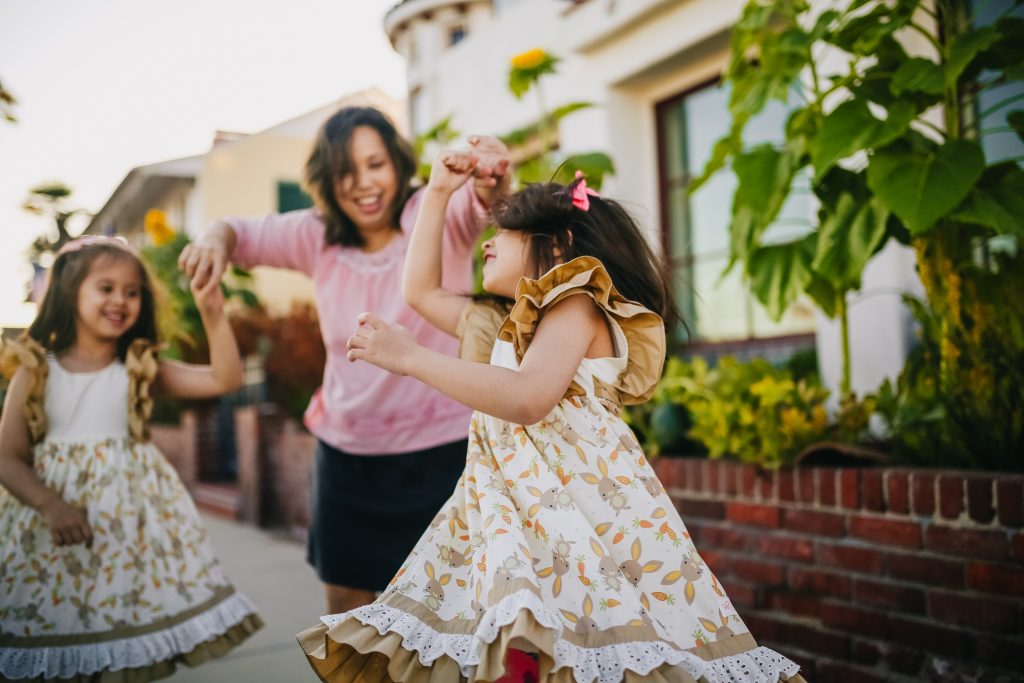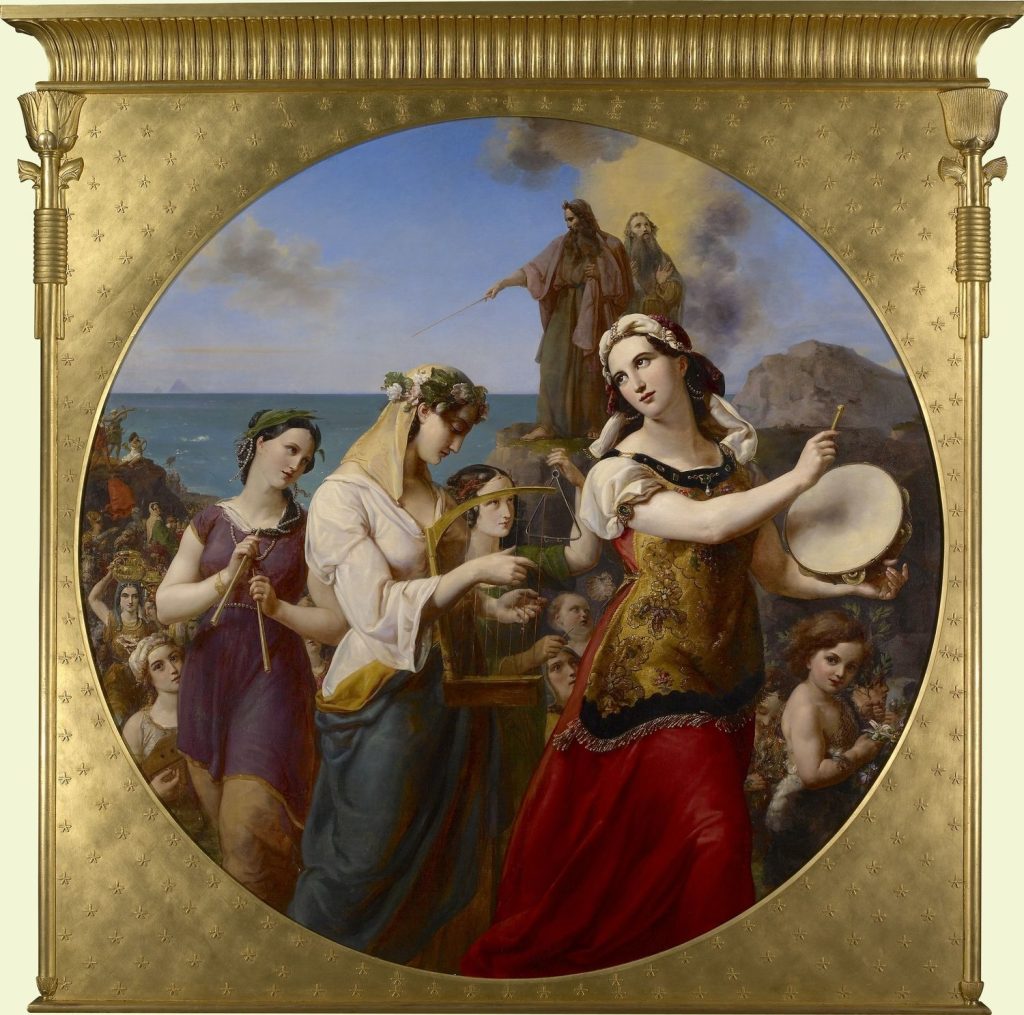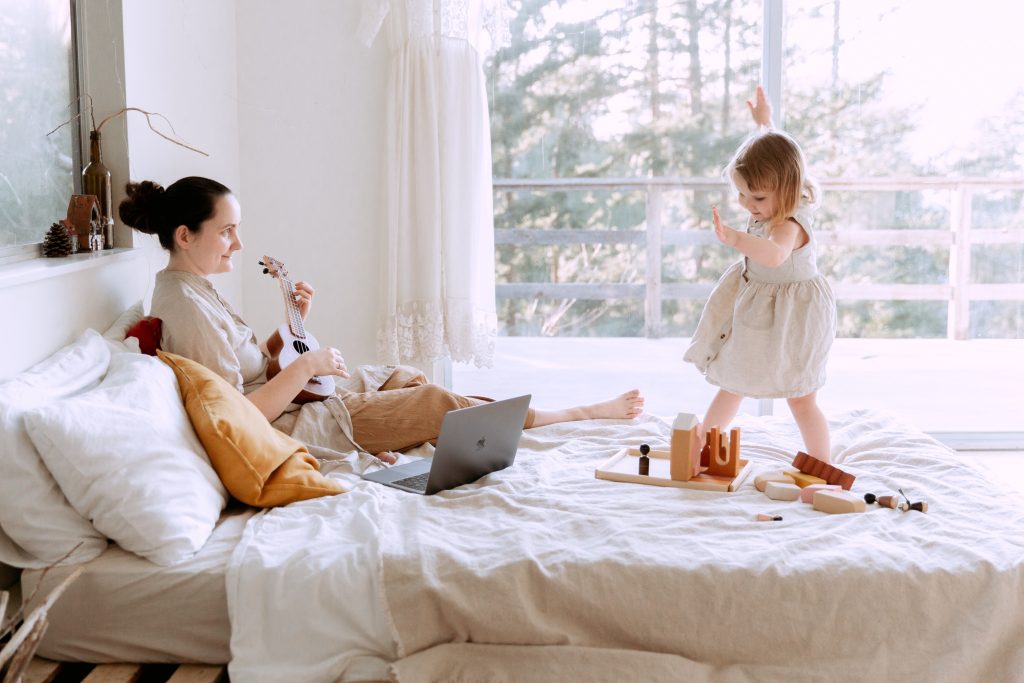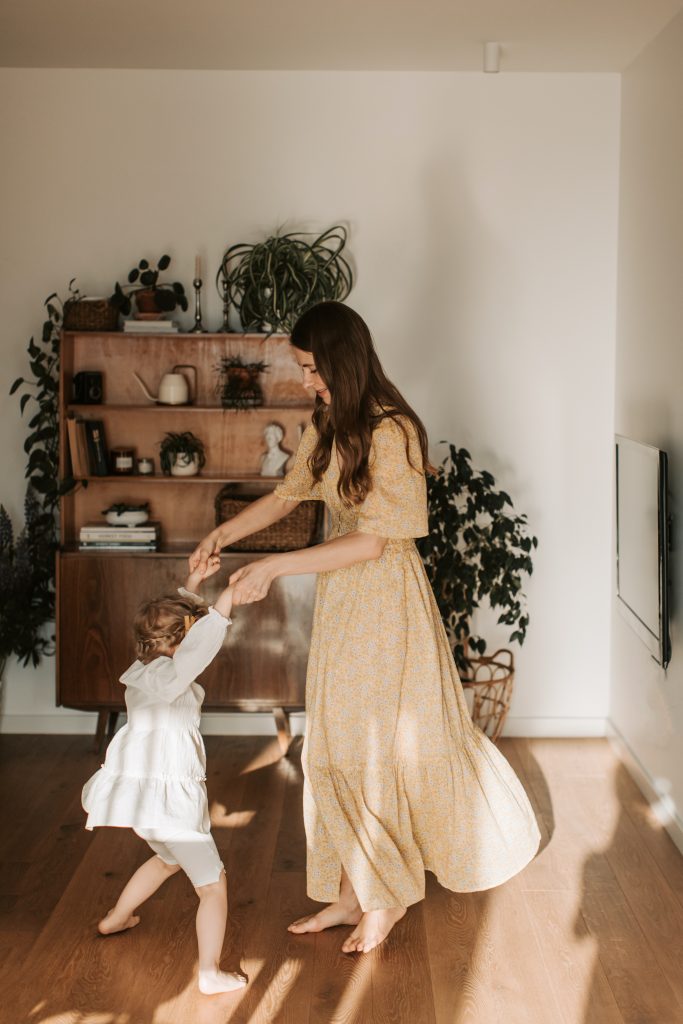Submitted by a Raising the Bar contributor

Dance is an expression of emotion.
What emotion are you expressing?
When Brigham Young entered the Salt Lake Valley, he and other early leaders taught the Saints that they had been commissioned by the Lord to build a new culture, a culture of refinement and holiness! While the Prophet Joseph Smith’s attempts to build a Zion culture in Missouri and Nauvoo were rejected by the people in general, Brigham Young attempted a ‘second chance’ in the West. The early leaders taught the Latter-day Saints to preserve the best traditions from their homelands and from there construct a Zion worthy civilization.
Dances were originally performed in the Nauvoo Temple and many Latter-day Saints danced to the Lord inside the temple following an endowment session! The Prophet Joseph Smith hosted dances in the Mansion House during his lifetime. Brigham Young taught the early Saints to worship God through dance. Among ancient Israel, Miriam and the daughters of Israel danced to praise God for delivering them from the Egyptians and the ancient King David called for the Lord’s people to praise their God with dancing.

Sadly, the early vision of restoring wholesome, refined and worshipful dance has largely been lost in our modernist culture. Today, even the “best” dances can easily be improved. This is a critical part of our mission! Restoring dance is part of the Restoration and building Zion.
When determining whether a dance is appropriate or useful, the following list of basic principles can be used.
Dance is an expression of emotion.
Dance is driven by the accompanying music. When we dance, we physically express the emotion communicated by the music.
Those that have kept the covenants and served their God, if they wish to exercise themselves in any way to rest their minds and tire their bodies, go and enjoy yourselves in the dance, and let God be in all your thoughts in this as in all other things, and he will bless you. (Discourses of Brigham Young, p. 242)

Music speaks the language of the heart more effectively than perhaps any other medium. When we listen to music, we feel the message being spoken by the music whether it be love, joy, pleasure, pain, despair, anger, jealousy, pride, fear, admiration, thanksgiving, compassion, and the list could go on and on. Human beings in turn often desire to express their emotions. This can be done through words or through physical activity. Dance is one of the most powerful tools to convey those emotions.
What if we ensured that only pure and righteous emotion was expressed in our dance?
With every dance we should ask ourselves, “What is the emotion behind this dance? Is it refined? Is it confrontational? Is it romantic? Is it carefree? Is it boisterous? Is it noble? Is it dignified?” We should critically analyze every dance. What is good? What is bad? How can it be improved?
For example, some cultures use dance to arouse the men in their community to prepare for war. “War dances” provoke feelings of anger, violence and aggression and the dance itself is used to manipulate men to commit violent acts they would never commit under “normal” circumstances.
On the other hand, dances are frequently used in romantic films to communicate the growing relationship between the hero and heroine. While some dances promote honorable love, the vast majority of others suggest lust, selfishness and fornication.
One specific example of a dance being used to communicate a message and as an expression of emotion is the scene where Mr. Darcy and Elizabeth Bennett dance in BBC’s Pride & Prejudice.
The music and movements of the dance were carefully selected to reflect the character of the hero and heroine at this stage of the story. Each is struggling with misunderstanding and prejudice. There is pride and a battle of wills clashing between them. The music and dance reflects this spar between Mr. Darcy and Elizabeth, even including the emotions of pride that underscores the moral of the story. The music is not playful or romantic, like other pieces that could have been chosen.
Understanding the power of dance to express emotion, we realize that dance can be used for good or for evil. What are we using it for? Are we using it to draw us closer to God, or away from Him?
The female role/part should be feminine, but being careful to eliminate inappropriate sexual overtones.
The male part/role should be masculine.
Each dance should have purpose and direction.
We should carefully choose dances that express the emotion we should be feeling and expressing at this time? Is it time to rejoice and express thanksgiving to God? Is it time to express romantic love? Is it time to express playfulness? Is it time to express nobility and dignity? Pick your dance to match the right message at the right time. What would it look like if all of our dances were carefully selected to give glory to God?

If you wish to dance, dance; and you are just as much prepared for a prayer meeting after dancing as ever you were, if you are Saints. If you desire to ask God for anything, you are as well prepared to do so in the dance as in any other place, if you are Saints. (Discourses of Brigham Young, p. 243)
Dance should be an expression of worship to God.
Worship is the ultimate purpose of dance. As seen in the Bible Dictionary:
If thou art merry, praise the Lord with singing, with music, with dancing, and with a prayer of praise and thanksgiving. (Doctrine and Covenants 136:28) “Dancing. A natural sign of rejoicing, and as such frequently formed part of religious ceremonies (Ex. 15:20; 32:19; Judg. 11:34; 2 Sam. 6:14–16; 1 Chr. 15:29). The dancing was often accompanied by a song with chorus, and instrumental music (Ps. 68:25; 149:3; 150:4).” (Bible Dictionary)
What can we learn from the scriptures? Dance is an expression of emotion. In the past, it was a sacred, even religious, art for worshipping God! If we are truly followers of Jesus Christ, our dance should praise the Lord, demonstrating our joy and holy celebration of His holiness, goodness and righteousness. To do this, righteous dancing must be refined, dignified, orderly and elegant.

No dance is perfect. In fact, celestial dance may not exist in our culture today. As I have analyzed dances over the years, I have determined that the threads of decent dance we have today represent, at best, a terrestrial art. However, there is so much we can do to reform this lost art of worship, if we will seek for it.
One last question that should be addressed: can dance be used for wicked purposes? In the Book of Mormon, we see a specific example where dance was used for wicked purposes. Dance is not amoral.
“. . . behold, my brethren and the sons of Ishmael and also their wives began to make themselves merry, insomuch that they began to dance, and to sing, and to speak with much rudeness, yea, even that they did forget by what power they had been brought thither; yea, they were lifted up unto exceeding rudeness.” (1 Nephi 18:9)
What does it mean to “dance . . . with much rudeness”? According to Webster’s 1828 dictionary, “rudeness” could include:
2. Rough; of coarse manners; unpolished; uncivil; clownish; rustic; as a rude countryman; rude no behavior; rude treatment; a rude attack.
8. Artless; inelegant; not polished; as a rude translation of Virgil.
When Laman, Lemuel and the sons of Ishmael rebelled against God, this led to dance that was:
- inelegant,
- vulgar,
- crude,
- silly,
- Light-minded
- Slovenly
- Sloppy
- Rough
- Graceless
- Unrefined
How is this seen in dance from our own culture today? Let us use the story of Laman and Lemuel’s rebellion on the ship as a warning and a guideline for avoiding “rude” dancing in our own day.
President Kimball once taught:
Down in New Zealand, I was the recipient of many courtesies while there. They sang and danced and rolled their eyes and stuck out their tongues. And so we applaud them, you know, and think it wonderful to encourage the continuation of that culture. But as it was interpreted to me, . . . they chant and sing battle hymns—not peace hymns. And so I said to some of the leaders: “With all your beautiful voices, your wonderful talent, why don’t you develop some impressive songs on the themes surrounding the coming of Christ, about the restoration of the gospel, about lofty ideals, the latter-day exodus, the glories and good things which the gospel and the Church have brought us?” In all cultures, let us perpetuate not the mating dances, the sex stories, but the good and the beautiful and lofty as we sing and as we dance.
We should be perpetuating Mormonism and the gospel; the true way of life. That doesn’t mean we need to bury all things of the past; but, if there is anything associated with paganism or sectarianism or sex, we eliminate. And so, we are building a great culture entirely different from that out there in the sectarian world. We are building a glorious culture of cleanliness and morality with high-minded, wonderful people. And, all the things the Church does—the singing of the songs, the speaking in public, the organization—everything is devoted to this one thing: building a great spiritual culture that the Lord wants. (Teachings of Spencer W. Kimball, 394)
Family Activity – Analyzing Dance
The following are some examples of dances used in film to communicate a message. Analyze these with your family or friends.
- What is the emotion? Be specific and descriptive.
- Is the attitude sloppy or refined? Light minded or sober? Love or lust?
- Should the dance be discarded or improved?
*Inclusion of these dances is NOT a recommendation of the movie. Please use this only for analyzing dance. Most of these movies are not recommended
- Darcy and Elizabeth Dance https://www.youtube.com/watch?v=dBgaO9Va5cA
- Note: Note the emotions in this scene. In contrast to a romantic dance, the dance in this scene (Mr. Beveridge’s Maggot), conveys emotions that represent the relationship (somewhat tense, confrontational) between Mr. Darcy and Elisabeth Bennett at this place in Jane Austen’s novel, Pride and Prejudice.
- Emma and Mr. Knightly dance (2009 adaptation, **This adaptation of Jane Austen’s Emma is not recommended. The scene is only used for educational purposes in this instance.) https://www.youtube.com/watch?v=ImAlox_ZlJ4
- Seven Brides for Seven Brothers Barn Dance https://www.youtube.com/watch?v=QbzJtP75NqM
- Maria and the Captain dance the Laendler from The Sound of Music https://www.youtube.com/watch?v=qUfWRBGQkz0
- Elizabeth and Darcy’s Dance (2005) https://www.youtube.com/watch?v=z9SXvUdM_iw
- The Laendler – The Sound of Music https://www.youtube.com/watch?v=nTElpaOvBRI
- Native American War Dance https://www.youtube.com/watch?v=nA0bTp677gk








5 Responses
Thoughtful, I wish that sources had been cited for dancing in the temple etc.
Future articles in the works!
First, who is the author of this article? If the author is the “Joseph Smith Foundation Team”…then perhaps think about taking the “I” out of it. Unless of course that is a quote…then maybe add who the quote was from.
“The female role/part should be feminine, but being careful to eliminate inappropriate sexual overtones.
The male part/role should be masculine.”
Why is it that the female needs to be careful to eliminate inappropriate sexual overtones…yet the male has no direction in this matter?
And it seems like your view is that all things must be analyzed critically and must be in line with certain defined perspectives. This is troubling. Especially given the nature of dance itself. What one deems an expression of the flow of water as the Jaredite’s boats cross the ocean…another might find sexual. And if only righteous expression is allowed…where does that leave the scriptures? Why are they able to express in their stories and histories people who were angry, sinful, rebellious, murderous and all sorts of other nasty stuff and yet still tell us about righteousness; about the truth; about the gospel?
If dance is art, then should art only express goodness? Wholesomeness? How can we know the sweet without tasting the bitter? How can we reflect on what Eve did in the garden when we know that it was a sin. Sure, we may call it a transgression but either way it was against God’s wishes.
We know she was an amazing person. In fact, all righteous people in the scriptures were amazing… yet they were not perfect.
How is it that we can have the incredible expression of dance without being able to show anger, frustration, shame, horror…. or darkness of any kind? Why does every dance need to be scrutinized for what seems to be….evil? Why must we critically look at a someone just dancing in the sun and try to deem if it was bad and therefore needs to be thrown out?
This article feels reductionist, limited in its perspective and scope and needs some serious reflection and revision.
And someone needs to look closer at the Mauri people and what their dances mean. What they meant historically and what they meant in the 70’s and how that has changed over time.
You have people listed as researchers. Well…. have them research!
You mentioned the Maori but must have missed the Spencer Kimball quote at the end? “Down in New Zealand, I was the recipient of many courtesies while there. They sang and danced and rolled their eyes and stuck out their tongues. And so we applaud them, you know, and think it wonderful to encourage the continuation of that culture. But as it was interpreted to me, . . . they chant and sing battle hymns—not peace hymns. And so I said to some of the leaders: “With all your beautiful voices, your wonderful talent, why don’t you develop some impressive songs on the themes surrounding the coming of Christ, about the restoration of the gospel, about lofty ideals, the latter-day exodus, the glories and good things which the gospel and the Church have brought us?” In all cultures, let us perpetuate not the mating dances, the sex stories, but the good and the beautiful and lofty as we sing and as we dance.
“We should be perpetuating Mormonism and the gospel; the true way of life. That doesn’t mean we need to bury all things of the past; but, if there is anything associated with paganism or sectarianism or sex, we eliminate. And so, we are building a great culture entirely different from that out there in the sectarian world. We are building a glorious culture of cleanliness and morality with high-minded, wonderful people. And, all the things the Church does—the singing of the songs, the speaking in public, the organization—everything is devoted to this one thing: building a great spiritual culture that the Lord wants.” (Teachings of Spencer W. Kimball, 394)
I thought the point is good that God has a standard and we should be trying to support dance that models His lifestyle. What dance does God do in the Celestial Kingdom? Get as close to that as we maybe can. The Book of Mormon has violence but HOW is so completely different than how Hunger Games has it. Or some of Jane Austen’s books deal with adultery but totally different from Hollywood movies.
Hello Scott, This article was written by a contributor as part of the Raising the Bar project. Raising the Bar is a gathering place for Latter-day Saints to share how they are seeking to discover higher standards as a means to encourage and support one another. Thank you for your feedback!